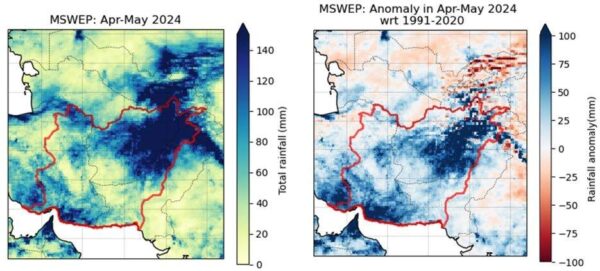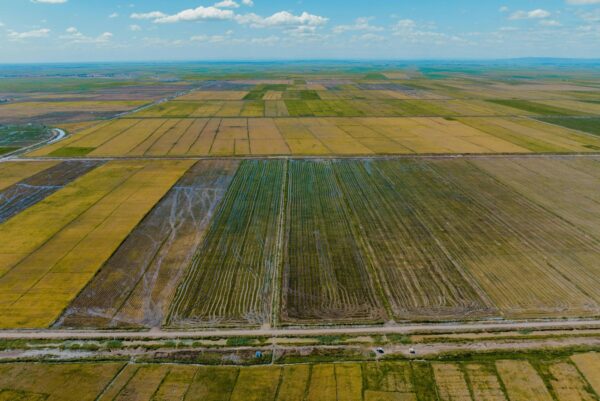Increasing April-May rainfall, El Niño and high vulnerability behind deadly flooding in Afghanistan, Pakistan and Iran
Authors
Mariam Zachariah, Fahad Saeed, Clair Barnes, Ben Clarke, Maja Vahlberg, Lisa Thalheimer and Friederike Otto

This April and May, large regions of central Asia were hit by a series of storms resulting in heavy downpours and flash flooding.
The worst affected country was Afghanistan, where 540 fatalities have been reported since March (WFP, 2024). In Pakistan, at least 124 people died in severe flooding in Pakistan in April (OCHA, 2024), while 18 people died in Iran in May (Iran International Newsroom, 2024). In addition, the heavy rainfall damaged thousands of homes and submerged agricultural lands.
These episodes occurred just outside of the region’s main winter rainfall season, which runs from November to early April. The unusually high rains and subsequent floods in April and May followed a three-month dry period from December to March.
Researchers collaborated to assess to what extent human-induced climate change altered the likelihood and intensity of the weather conditions at the time of the most impactful floods.
They focused on a region centred on Afghanistan, bounded on the west by Iranian provinces of and on the east by provinces in Pakistan. This area covers the flood-impacted regions through April and May 2024. Due to the atypicality of this season, occurring outside of the usual rainfall period and featuring an unusual number of storms that made it wetter than normal, we choose the seasonal accumulated precipitation during April and May for the temporal definition.
Figure 1 shows the total rainfall during April-May 2024 and the anomaly with respect to 1991-2020 average, over the region.

Main findings
- Afghanistan and Pakistan are highly vulnerable to flooding due to factors such as limited transboundary water management, unplanned urban expansion, and deforestation which are contributing to increased flood risks, in combination with socio-economic conditions and compounding natural hazards, e.g. earthquakes, landslides, and drought. While Iran is less vulnerable than the other countries studied, urban infrastructure-related vulnerabilities in some cities in the northeast contributed to the impacts.
- The floods also occurred on top of existing vulnerabilities linked to complex crises. Displaced populations were particularly impacted, especially as limited essential infrastructure was destroyed and already vulnerable populations were exposed to more waterborne diseases.
- The event, despite occurring outside the usual rainy season, is not a particularly rare event in today’s climate that has been warmed by 1.2°C with a return time of about ten years under the current El Niño Southern Oscillation (ENSO) conditions.
- The declining El Niño Southern Oscillation, a naturally occurring climate phenomenon, is important to explain the variability in the observed rainfall, consistent with previous research. In observations, as compared to a neutral ENSO year, the declining El Niño resulted in a consistent increase across all datasets by a factor of about two in likelihood and about 8% in intensity.
- To assess the role of human-induced climate change we combine observation-based products and climate models that include the observed ENSO relationship and assess changes in the likelihood and intensity for the heavy rainfall in the study region. While the last 40 years of observational data show an increase, climate models have a very different signal, depending on the model, with some showing an increase and some a decrease. Consequently, without further analysis into why the models show such different behaviour we can not attribute the observed increase, which is also not consistent across observation-based products, to human-induced climate change.
- The disagreement between model results and observations prevents us from concluding with certainty that human-induced climate change is the main driver making this event more likely. However, given the observed trend over the last 40 years, the absence of evidence does not mean that human-induced climate change is not a driver of increasingly heavier rainfall in this region and season in a warmer climate.
- There are ample opportunities to improve climate adaptation and resilience through, for example, investing in building resilient infrastructure and reinforcing existing structures to withstand extreme events, implementing more comprehensive nature-based solutions, increasing the coverage of early warning systems, and improving flood risk management policy and planning.











